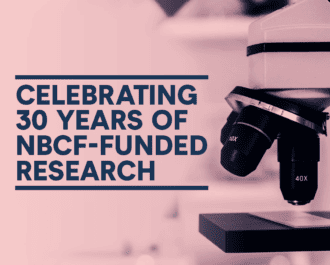 Treat
Treat
Approximately five to 10 per cent of breast cancer cases are associated with defects in the BRCA-1 and BRCA-2 genes. These genes act as tumor suppressors, coding for proteins that repair DNA damage. When a person has a defective BRCA gene, the cell cannot efficiently heal DNA damage and may become cancerous.
In the past five years, PARP inhibitor drugs have been shown to be effective in BRCA-related breast cancers. PARP inhibitors block another DNA repair mechanism in the cell. The combination of a PARP inhibitor and the defective BRCA gene causes tumour cells to die. As the PARP inhibitor selectively kills cells that are BRCA-defective, treatment side effects are decreased. However, the results are often only short lived. Within a relatively short time, the tumour cells become resistant.
A new study, published this month in the Journal of Cell Biology, has identified a possible cause of this resistance. Scientists at the Washington University School of Medicine found that two other genes, Aurora A and TPX2, work in parallel to the BRCA DNA repair pathway. In BRAC defective cells, this pathway can substitute for BRAC loss and providing a way for cancer cells to escape the chemotherapy treatment, leading to tumour recurrence.
“Women treated with PARP inhibitors typically go into remission relatively quickly, but a lot of these cancers then become resistant partly because there are other proteins in the cell that can compensate for the lack of BRCA,” explained Andrea Byrum, the study’s co-first author. “If we target these other factors (Aurora A and TPX2), we might be able to make the tumor sensitive to the (PARP inhibitor) drugs again.”
The group are now seeking funding to run a clinical trial which combines two drugs – a PARP inhibitor and an Aurora A inhibitor. This combination therapy is likely to more effectively target the breast cancer cells than current chemotherapy.

Associate Professor Andrew Burgess
Aurora A and TPX2 are not the only genes that are implicated in PARP inhibitor drug resistance. NBCF-funded research at ANZAC Research Institute by Associate Professor Andrew Burgess has identified a gene called MASTL that is also important in recovery from DNA damage.
“MASTL has strong links with Aurora A, so this new study is very exciting.” said A/Prof Burgess. “Importantly, MASTL is over-expressed in up to 45% of triple-negative breast cancer cases suggesting that it could be a valuable target for a large number of patients.”
Unlike Aurora A, there is currently no commercially available MASTL inhibitor drug. A/Prof Burgess said that development of such a drug is underway, and anticipates clinical trials within 10 years. He is excited about the potential of these dual drug therapies. “This recent work on Aurora A shows that there is great promise for the future,” he concluded.
More News Articles
View all News Treat
Treat

